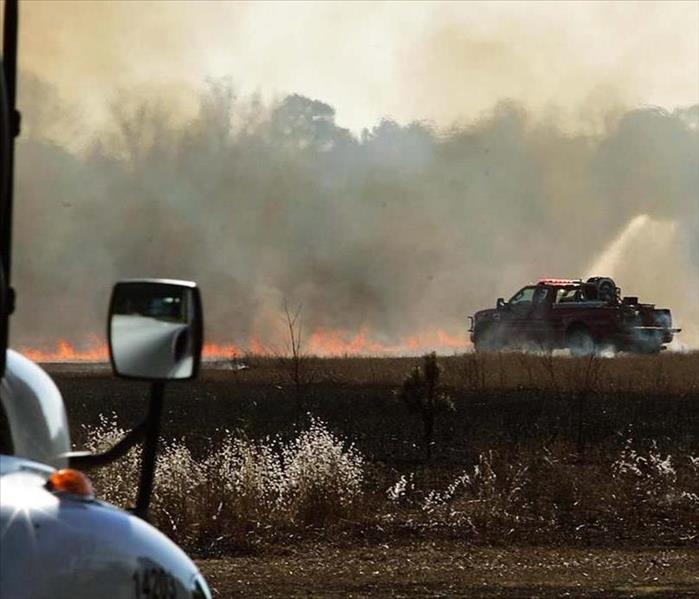Wild Fire Zones
7/25/2018 (Permalink)
We have had a really wet spring this year, and that can mean two different things. On one hand, the trees, grass and shrubs are growing lush and green. But unfortunately in Casper, it does turn brown later in the season, and makes fuel for fire. There are many things that can start a wildland fire, anywhere from human irresponsibility to naturally-occurring events, such as lightning strikes. There are steps you can take to protect your home, whether you reside in the city, up in the mountains, or out on the Wyoming prairies. There are 3 types of defensive zones to help protect your home:
Zone 1
- Prune and maintain any plants to prevent excessive growth. Also, remove all dead branches, stems and leaves within and below the plant.
- Do not store firewood or other combustible materials anywhere in this zone. Keep firewood at least 30 feet away from structures, and uphill if possible.
- Remove any branches that overhang or touch the roof, and remove all fuelswithin 10 feet of the chimney.
- Remove all pine needles and other debris from the roof, deck and gutters.
- Rake pine needles and other organic debris at least 10 feet away from all decks and structures.
Zone 2
- Limit the number of dead trees (snags) to one or two per acre. Be sure snags cannot fall onto the house, power lines, roads or driveways.
- Small groups of two or three trees may be left in some areas of Zone 2, but leave a minimum of 30 feet between the crowns of these clumps and surrounding trees.
- Remove all ladder fuels from under remaining trees. Prune tree branches off the trunk to a height of 10 feet from the ground or 1/3 the height of the tree, whichever is less.
- Locate propane tanks and natural gas meters at least 30 feet from any structures, preferably on the same elevation as the house.
- The tank should not be located below your house because if it ignites, the fire would tend to burn uphill. Conversely, if the tank or meter is located above your house and it develops a leak, gas will flow downhill into your home.
- Do not visibly screen propane tanks or natural gas meters with shrubs, vegetation or flammable fencing. Instead, install 5 feet of nonflammable ground cover around the tank or meter.
Zone 3
- While tree pruning generally is not necessary, it may be a good idea from the standpoint of personal safety to prune trees along trails and firefighter access roads. Or, if you prefer the aesthetics of a well-manicured forest, you might prune the entire area. In any case, pruning helps reduce ladder fuels within tree stands, thus reducing the risk of crown fire.
- Remember to consider the hazards associated with ladder fuels. A forest with a higher canopy reduces the chance of a surface fire climbing into the tops of the trees, and might be a priority if this zone has steep slopes.




 24/7 Emergency Service
24/7 Emergency Service
